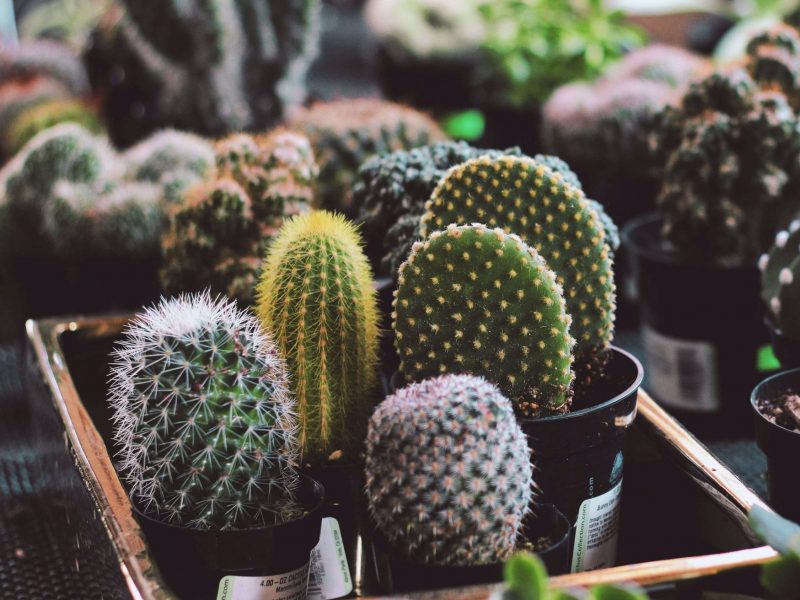
There are thought to be around 2,000 different Cacti types found globally, each with their own traits and characteristics. However, no matter what variety of Cactus you have, if you spot brown leaves forming on it then that can be an issue. Although some browning may be due to natural corking (more on that below), there are a couple of more serious reasons issues causing the brown leaves on your Cactus.
In this post, we will be going through each of the different reasons why your Cactus has developed brown leaves, as well as how to best treat the issue and prevent it from causing any more brown leaves, patches or spots on your Cactus.
It might just be natural corking
If your Cactus is turning brown from the base upwards, then it might just be the natural corking process. In order to protect themselves from breakages, Cacti develop a corked bottom which sort of resembles bark on a tree. As Cacti mature they become quite top-heavy which makes them susceptible to falling over and breaking so corking is their natural survival tactic.
The corked area of your Cactus will appear light brown in colour and be quite sturdy to touch. This is a completely normal process and is not the result of any wrong care or environmental factor. If you don’t like the appearance of the corked area on your Cactus, then you have the possibility of propagating the top and creating a new plant.
However, if the brown area of your Cactus is soft, or not formed from the base upwards, then there is an underlying issue that needs to be solved. Below we will go through each of these factors.
Too much water can cause soft brown patches on Cacti
If your Cactus is developing dark brown spots, a common cause of this is too much water and soggy potting mix. Cacti really don’t need much moisture to thrive and need their potting mix to fully dry out before you water again. The best way to water your Cactus is rarely but thoroughly rather than little but often as they don’t like consistent moisture.
Overwatering can quickly lead to root rot which is very harmful to your Cactus. Alongside browning leaves, it can also cause the plant to become unstable, soft and droopy. If not caught quickly, this can often be a killer for your Cactus as they don’t have much tolerance for moisture at all.
If you think you might have overwatered your Cactus it’s important to check the soil right away and change it out if it’s quite soggy. Never let it dry out naturally as even a few more days in soggy soil can make the difference between being able to save your Cactus, and not!
Moving forward, to avoid more brown leaves being caused by overwatering, make sure to check the moisture in the soil every time before watering your Cactus. The easiest way to check this is by digging your finger into the top two centimetres of the soil to see how moist it is. However, if your Cactus has quite large sharp spikes, then you might be better off using a moisture meter to avoid getting hurt.
We also recommend picking up your Cactus before and after watering. This should give you a feel for when your plant might need a little more water, simply by giving them a lift.
Your cactus might be sunburnt
Sunlight is one of the main factors that cause Cacti to develop brown leaves. There is a myth that Cacti can withstand any level of sunlight, no matter how intense. However, this isn’t always true and if your Cactus receives too much light and heat then it can lead to the top areas developing dry brown patches.
Sunburn usually affects the top of a Cactus, so look out for this as a way to diagnose the issue. It does, however, depend on how the light is hitting your plant so as a good rule of thumb, the area that is exposed to the most intense light will turn brown first.
If this is the cause of the brown leaves, cut off the tops of your Cactus to remove the worst affected areas and move to a slightly shadier spot. Your Cactus will then grow new pads out of the top of the sliced off area.
Temperature extremes can also result in brown patches
Cold temperatures and drafts can also be very harmful to your Cactus as they need warmth to thrive. Make sure your Cactus is not placed near doors or windows that may be drafty as the cold air coming in from outside can be very harmful for your Cactus (especially in winter).
If the issue is happening in summer, then it can also be cold air coming in through AC vents that is causing your Cactus to develop brown leaves. This is because all cold air will cause the potting mix to dry out slower, cells in your Cactus to freeze and enzyme activity will be slower. It can be a really good idea to pick up a digital thermometer to keep track of any fluctuations in temperature and make sure that your Cactus is getting enough warmth.
Those are the most common reasons that Cacti develop brown leaves. Although they are known for being super hardy and low maintenance plants, it doesn’t make them immune to any issues such as brown leaves. It’s important to rule out corking as this can be quite common on Cacti and is completely normal. After all, you don’t want to be changing the care or environment for your Cactus if nothing is actually wrong.
To learn more about how to best care for your plant, take a look through our Cactus care guide.














